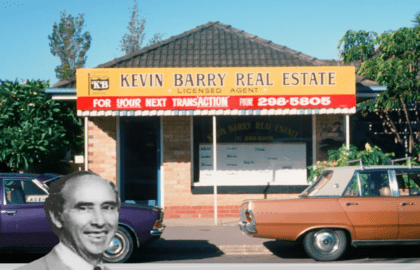According to the RP Data CoreLogic Home Value Index, combined capital city home values have increased by 10.9% over the 12 months and by 18.7% over the current growth phase. With many economic indicators heading in the wrong direction it seems counter-intuitive that home values would continue to rise as strongly as they are. The answer to why home values continue to rise can partly be explained by the level of equity sitting in our homes.
The Australian Bureau of Statistics (ABS) estimated that as at June 2014 there were 9,366,800 residential dwellings across the country. Over the 12 months to June 2014, RP Data estimated that there were 484,000 dwellings sold across the nation. Based on these figures, just 5.2% of total dwelling stock sold over the past year. Equity is difficult to truly calculate as there are no regular statistics available on home equity levels, as you’d imagine the banks hold this data quite tight. So whilst we can’t determine the reduction in the initial borrowings over time, we can determine how much home values have increased over time which is a key component of how much wealth has been accumulated in a property.
Over the past two decades, the level of value growth across Australia’s capital cities has been strong. As deregulation of financial markets has taken place lending for residential housing has ramped up significantly. Subsequently, the cost of housing has risen and those who own a home or have a mortgage have seen a large rise in their equity.
Since national home values reached a low point in December 2008 after a cumulative -6.1% fall from March to December of 2008, there has been a significant divergence in the level of capital growth across individual capital cities.
From the end of 2008 to August 2014, total home value increases have been much greater in Sydney and Melbourne than across the other capital cities. This is by virtue of value rises of 27.2% and 19.5% over the current growth cycle as well as quite strong value rises throughout the 2009 and 2010 growth cycle. The impact of this growth in home values means that even those who have only recently purchased in Sydney and Melbourne, say in 2009 or 2010, have already seen a large increase in the value of their home. As a result, some are using this equity to purchase investment properties, others will use the equity to upgrade into more suitable housing for their needs and of course others will have different or no strategies for the equity.
Housing finance data from the Australian Bureau of Statistics (ABS) shows that investment lending for new loans (this excludes refinances) has recently hit record levels while first home buyer demand is at an all-time low. The two driving segments of the housing market are investors and subsequent buyers (those upgrading or downgrading their principal place of residence). But why are they choosing property, why now and why Sydney and Melbourne?
Standard variable mortgage rates are currently recorded at 5.95%. Outside of an eight month period between February 2009 and September 2009, standard variable mortgage rates haven’t been lower than they currently are since the early 1970’s. Over recent years, discounted variable mortgage rates have become much more prevalent in the mortgage market. Currently, discounted variable mortgage rates are 85 basis points lower (5.1%) than standard mortgage rates. With the banks competing heavily for mortgage business currently a large proportion of borrowers are able to get that discounted rate or even lower on their home loan.
The low interest rates also have an impact on investment decisions by making certain other asset classes less attractive. With official interest rates sitting at 2.5% the amount of interest for cash sitting in the bank is very little. According to data from the Reserve Bank (RBA) in August, a three year term deposit with $10,000 or more receives just 3.65% interest per annum. When you consider that inflation is at 3.0%, the real returns from a term deposit are miserly.
The relatively low cost of servicing a mortgage currently and the low returns on risk-free investment is attracting increasing investor activity to the housing market. The historical performance of an asset should not be used as guidance to the future returns. Although this is the case and a disclaimer many use when providing investment advice, the historic returns from residential housing have been impressive and difficult to argue with. Obviously many people believe that these returns will continue into the future. It is important to note that housing market returns have generally been much more moderate following the financial crisis than they were prior to the crisis. In fact on an annual basis home values have fallen over three of the past seven calendar years (2008, 2011 and 2012).
With returns so low amongst risk-free investments, investors have clearly shifted their focus to slightly riskier asset-classes such as residential housing. In particular the focus has been centred on our two largest cities, Sydney and Melbourne. Although housing has proven to be a low-risk investment class over recent times it is not a one-way bet. Values are rising on the back of increased competition for stock however, with values rising at some point a proportion of the market will no longer be able to afford the homes available for sale. At some point in the future (who knows when) growth in values will slow and interest rates will increase. We are also seeing a very strong supply-side response with a record high number of dwelling approvals over the past 12 months. Additional supply should ease some of the upwards pressure on values. It has already resulted in a moderation of rental growth, with rental pressures subsiding we may also see more potential buyers choosing to remain in the rental market rather than purchase their own owner-occupied property.
When value growth slows or starts to fall we may see investors shift from housing to other more liquid asset classes. As interest rates rise, servicing the mortgage becomes more expensive. The point being, housing has generally provided solid capital gains over the past two decades and growth conditions across Sydney and Melbourne are currently spectacular, however the market moves in cycles and the growth being seen in Sydney and Melbourne will eventually transition to less expensive markets that show stronger fundamentals for capital gains.
Follow the Professionals Christies Beach real estate blog for more interesting articles.
See also – “Breast cancer fundraiser – you’re invited”











